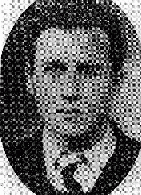You searched for: 【AG真人官方qee9.com】福彩3D双彩论坛手机版0kna
<< Previous | Displaying results 401-450 of 745 for "【AG真人官方qee9.com】福彩3D双彩论坛手机版0kna" | Next >>
-
Ohrdruf
ArticleThe Ohrdruf camp was a subcamp of the Buchenwald concentration camp, and the first Nazi camp liberated by US troops.
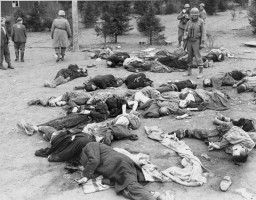
-
The 84th Infantry Division during World War II
ArticleThe 84th Infantry Division participated in major WWII campaigns and is recognized for liberating two Neuengamme subcamps, Hannover-Ahlem and Salzwedel, in 1945.
-
Hajj Amin al-Husayni: Wartime Propagandist
ArticleFormer Mufti of Jerusalem Hajj Amin al-Husayni was an exiled political leader who sought an alliance with the Axis Powers. Learn about his wartime propaganda efforts.
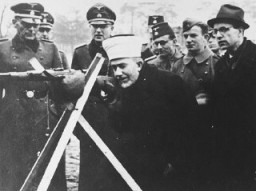
-
Background: Jurists' Trial Verdict
ArticleThe Justice Case, or Jurists’ Trial, of the Subsequent Nuremberg Proceedings tried members of the German justice administration. Browse excerpts from the verdict.
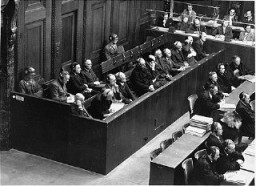
-
The Nazi Persecution of Black People in Germany
ArticleRead about the Nazi persecution of Black people, as well as Black people's experiences in Germany before the Nazi rise to power.
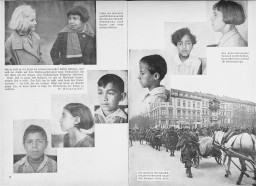
-
Timeline of the German Military and the Nazi Regime
ArticleKey dates illustrating the relationship between Germany’s professional military elite and the Nazi state, and the German military’s role in the Holocaust.
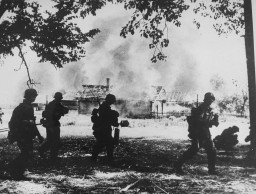
-
Mittelbau Main Camp: In Depth
ArticleLearn about conditions and forced labor in Dora-Mittelbau, the center of an extensive network of forced-labor camps for the production of V-2 missiles and other weapons.

-
Hodonín U Kunštátu (Hodonín bei Kunstadt) (Roma camp)
ArticleIn March 1942, the Hodonin camp was classified as a camp for Roma. It was a transfer station during deportation to Auschwitz-Birkenau. Learn about the camp and its history.

-
Zdziecioł (Zhetel)
ArticleThe Nazis occupied Zdziecioł (Zhetel), Poland in 1941. Learn more about the city and ghetto during World War II.
-
Antisemitic Legislation 1933–1939
ArticleHundreds of laws, decrees, guidelines, and regulations increasingly restricted the civil and human rights of Jews in Germany from 1933-39. Learn more.
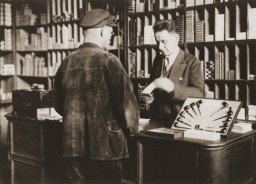
-
Operation Reinhard (Einsatz Reinhard)
ArticleNazi Germany established the killing centers of Belzec, Sobibor, and Treblinka as part of “Operation Reinhard,” the plan to murder all Jews in the General Government.
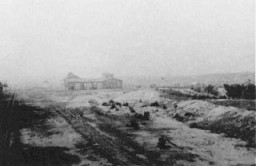
-
Leon Rupnik
ArticleDuring World War II, Slovene general Leon Rupnik collaborated with the forces of Fascist Italy and Nazi Germany. Rupnik was appointed president of the Provincial Government of the German-occupied Province of Ljubljana in 1943. He was convicted of treason and executed in 1946. In 2020, his sentence was annulled on a technicality.
-
British Prosecutor Shawcross
FilmBritish Chief Prosecutor Sir Hartley Shawcross makes a final plea to the International Military Tribunal.
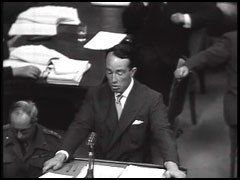
-
William (Bill) Lowenberg describes the importance of bonds of friendship among young people imprisoned in the Westerbork camp
Oral HistoryAs a boy, Bill attended school in Burgsteinfurt, a German town near the Dutch border. After the Nazis came to power in Germany in January 1933, Bill experienced increasing antisemitism and was once attacked on his way to Hebrew school by a boy who threw a knife at him. In 1936, he and his family left Germany for the Netherlands, where they had relatives and thought they would be safe. However, after Germany invaded the Netherlands in May 1940, antisemitic legislation--including the order to wear the Jewish…
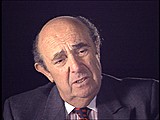
-
The Holocaust in Macedonia: Deportation of Monastir Jewry
ArticleIn March 1943, Bulgarian authorities transported the entire Jewish community of Monastir to a transit camp from which they were deported to Treblinka.

-
Henry Maslowicz
ID CardHenry's Jewish parents lived in a Polish town in which their families had lived for 150 years. The Jewish community enjoyed good relations with their Polish neighbors; the local Polish population refused to cooperate when the government encouraged a boycott of Jewish businesses during a wave of antisemitism that swept Poland in the mid-1930s. 1933-39: In the years before Henry was born, his father owned an iron and coal factory. The Germans occupied Wierzbnik on September 5, 1939. While some Jews fled,…

-
Tomas Kulka
ID CardTomas' parents were Jewish. His father, Robert Kulka, was a businessman from the Moravian town of Olomouc. His mother, Elsa Skutezka, was a milliner from Brno, the capital of Moravia. The couple was well-educated and spoke both Czech and German. They married in 1933 and settled in Robert's hometown of Olomouc. 1933-39: Tomas was born a year and a day after his parents were married. When Tomas was 3, his grandfather passed away and the Kulkas moved to Brno, which was his mother's hometown. On March 15,…

-
American propaganda announcement
DocumentAnnouncement dropped by American planes on Shanghai near the end of the war. [From the USHMM special exhibition Flight and Rescue.]
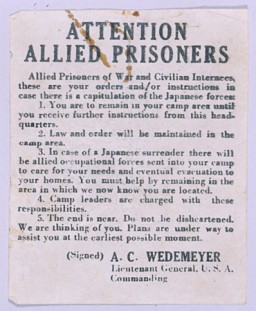
-
Lea Ofner-Szemere
ID CardLea was born in the city of Sombor in northeastern Yugoslavia. When she was 3 years old, her parents divorced and she moved to Vienna with her mother, who taught English and French to Austrian children. Lea enjoyed living in Vienna as a child. 1933-39: Lea returned to Sombor almost every year to visit her mother's relatives. There, she became reacquainted with her younger half-sister, Julia, and her older half-brother, Francis, and would miss them when she returned to Vienna. In 1938, the Germans annexed…

-
German-Soviet Pact
ArticleThe German-Soviet Pact paved the way for the joint invasion and occupation of Poland by Nazi Germany and the Soviet Union in September 1939.
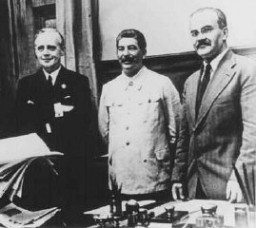
-
Izak Lichtenstein Testimony Excerpt
ArticleRead an excerpt from Izak Lichtenstein’s 1947 testimony about the resistance movement in the Lachva (Lachwa) ghetto.
-
Bergen-Belsen: Key Dates
ArticleExplore a timeline of the history of the Bergen-Belsen camp in the Nazi camp system. Initially a POW camp, it became a concentration camp in 1943.
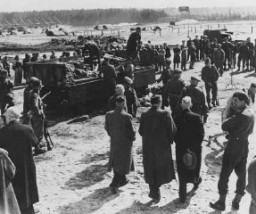
-
German Foreign Policy, 1933–1945
ArticleAdolf Hitler came to power with the goal of establishing a new racial order in Europe dominated by the German “master race.” This goal drove Nazi foreign policy. Learn more

-
The Kielce Pogrom: A Blood Libel Massacre of Holocaust Survivors
ArticleThe Kielce pogrom was a violent massacre in the town of Kielce, Poland in 1946. Learn more about the events that led up to the attack and the aftermath.

-
Wartime Fate of the Passengers of the St. Louis
ArticleIn May 1939, the St. Louis set sail from Germany to Cuba. Most of the passengers, fleeing Nazi Germany, were denied entry. Learn more about their fates.
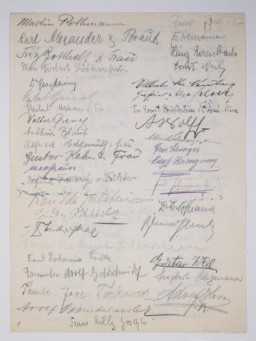
-
Flossenbürg: Key Dates
ArticleExplore a timeline of the history of the Flossenbürg camp in the Nazi camp system from its establishment in 1938 until liberation in 1945.

-
Foehrenwald Displaced Persons Camp
ArticleAfter WWII, many Holocaust survivors, unable to return to their homes, lived in displaced persons camps in Germany, Austria, and Italy. Read about Foehrenwald DP camp.
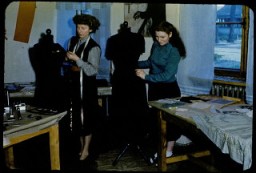
-
Wilhelm Keitel: Biography
ArticleField Marshal Wilhelm Keitel was commander of all German armed forces during World War II. Learn about his military career and postwar trial.

-
Althammer
ArticleThe Germans established the Althammer camp in September 1944. It was a subcamp of Auschwitz. Read more about the camp's history and conditions there.
-
The Nuremberg Code
ArticleLeading German physicians and administrators were put on trial for their role during the Holocaust. The resulting Nuremberg Code was a landmark document on medical ethics. Learn more

-
Reich Security Main Office (RSHA)
ArticleThe Reich Security Main Office (RSHA), created by Heinrich Himmler, brutally coordinated and perpetrated many aspects of the Holocaust.

-
Benito Mussolini
ArticleBenito Mussolini’s Fascist takeover of Italy was an inspiration and example for Adolf Hitler and the Nazi Party in Germany. Learn more.
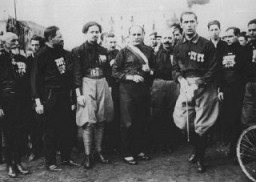
-
Operation Harvest Festival
Timeline EventNovember 3, 1943. On this date, SS and police units implemented "Operation Harvest Festival" (also known as Aktion Erntefest).

-
Anti-Jewish Boycott
Timeline EventApril 1, 1933. On this date, the Nazi Party and its affiliates organized a nationwide boycott of Jewish-owned businesses in Germany.
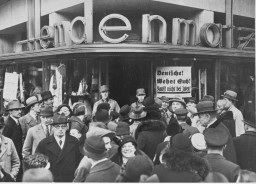
-
Mutiny of German Sailors in Kiel
Timeline EventNovember 3, 1918. On this day, German sailors in Kiel revolt, and protests against World War I spread.
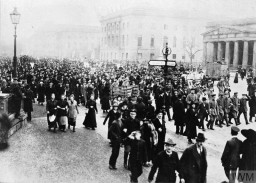
-
German Invasion of Poland
Timeline EventSeptember 1, 1939. On this date, Germany invaded Poland and initiated World War II in Europe.
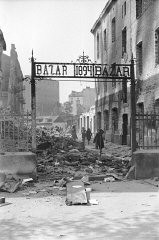
-
The Sicherheitsdienst (SD)
ArticleThe Sicherheitsdienst (Security Service, SD) was a Nazi intelligence agency. Ideologically radical and part of the SS, it was a key perpetrator of the Holocaust.
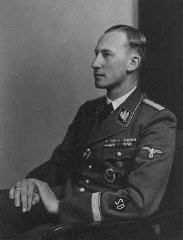
-
Quakers
ArticleThe American Friends Service Committee, a Quaker relief organization, helped thousands of people before, during, and after World War II. Learn about its refugee aid work.

-
Kristallnacht
ArticleOn November 9–10, 1938, the Nazi regime coordinated a wave of antisemitic violence. This became known as Kristallnacht or the "Night of Broken Glass." Learn more

-
Chaya Medalion
ID CardChaya and her brother and two sisters were raised in a religious, Yiddish-speaking home in the town of Kozienice, situated in east central Poland near a large birch forest. As a child, Chaya learned Hebrew. She attended Polish public schools and graduated at 14. Her father owned a factory that produced handmade shoes. 1933-39: Chaya was active in the Zionist movement, through which she met her boyfriend, Lewek Szabasson. Chaya and Lewek would stroll on Kozienice's main promenade which was at the…
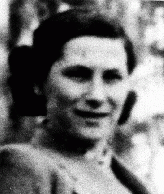
-
Vita Rivkina
ID CardBecause both of her parents had died by the time Vita was 5 years old, she went to live with her cousins. At the age of 18, Vita married Iosif Rivkin, and the couple moved to Minsk where they raised three daughters--Hacia, Dora and Berta. 1933-39: By the early 1930s, the Rivkin family lived on Novomesnitskaya Street in central Minsk, near the Svisloch River. In the 1930s the girls attended Soviet state schools and were members of the Soviet youth organization, Young Pioneers. By the late 1930s Minsk was…

-
Israel Yitzak Kisielnicki
ID CardThe youngest of three children, Israel Yitzak was born to Jewish parents living 35 miles east of Warsaw in the small, predominantly Jewish town of Kaluszyn. Israel's mother was a housewife, and his father was a merchant who often traveled on business, by horse and wagon, to Warsaw. Israel attended public school and also received religious instruction. 1933-39: When Germany invaded Poland several days ago, many kids Israel's age, afraid of what would happen if the Germans occupied Poland, fled to the USSR,…

-
Betje Jakobs
ID CardBetje and her sister Saartje were born to Jewish parents in the town of Zwolle in the Netherlands' north central province of Overijssel. Betje was known affectionately as "Bep" to her friends. The Jakobs family owned a successful sporting goods store. 1933-39: As a young girl, Betje enjoyed playing the piano, knitting and tennis. At age 16, while still in secondary school, she began to date Maurits Wijnberg, a boy two years her senior, whose family owned Zwolle's Hotel Wijnberg. 1940-42: The Germans…
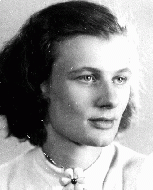
-
Rosalia Wourgaft Schatz
ID CardRosalia was raised by Jewish parents in the small, predominantly Jewish industrial city of Tulchin in southwestern Ukraine. She married Aaron Schatz, and together they raised four children in the city of Odessa. In 1919, when her family was grown, Rosalia and her daughter Ludmilla immigrated via Romania to France after Aaron was killed during the Russian civil war. 1933-39: Rosalia settled in Bagneux, a suburb of Paris. She spoke only Russian and Yiddish and found Paris to be a different world from the…
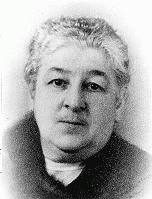
-
Benjamin Frydmacher
ID CardBenjamin was born in the industrial city of Lublin to a large, Yiddish-speaking Jewish family. He attended public school, and after he graduated at the age of 14, he apprenticed at the same tannery where his father was the tannery master. 1933-39: After completing his apprenticeship, Benjamin became the assistant tannery master. After his father's death in 1938, he became the production tannery master. He and his wife, Gucia, lived with his mother at 50 Lubartowska Street. In 1938 the Frydmachers had a…
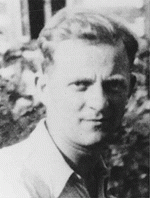
-
Benjamin Soep
ID CardBenjamin, called "Benno" by his family and friends, grew up in a religious Jewish household in Amsterdam. Benno's father, a successful diamond manufacturer, was president of the Amsterdam Jewish community. Benno had two younger sisters and enjoyed collecting stamps. 1933-39: After he obtained some work experience in a department store, Benno joined his father in the diamond business. Benno adhered strictly to Jewish law. He loved tennis and skiing, and in 1938, while skiing in Switzerland, he met a girl…
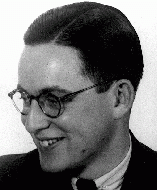
-
Frederick Dermer
ID CardFrederick was born to a Jewish family in the Austrian capital of Vienna. His father died when he was a baby, and he and his mother moved into an apartment with Frederick's widowed grandfather. As a young boy, Frederick attended a Viennese public school. 1933-39: Frederick was a rambunctious child. Once, when his grandfather was baby-sitting, Frederick used a silk lampshade as a "parachute," and jumped from the top of the wardrobe closet. That was the last time Frederick's grandfather would baby-sit.…

-
Moise Gani
ID CardMoise's family were Romaniot Jews, a group that had lived in Greek cities and the Balkans for 1,100 years. In the early 1920s Moise's family moved to Italy, where his father tried to find work. Moise attended school, and when his family returned to Greece after two years, he remained in Italy to complete school. When Moise returned to Preveza at age 17, he had forgotten Greek. 1933-39: Moise worked as a bookkeeper and administrator at the local electric company in Preveza, and he lived with his parents.…
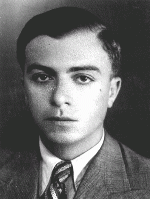
-
Samuel Zoltan
ID CardSamuel's parents immigrated to Palestine when he was very young. They lived in Rishon le Zion, the first settlement in Palestine founded by Jews from outside of Palestine. After graduating from high school, Samuel became active in a movement challenging the British mandate in Palestine. 1933-39: Samuel was expelled from Palestine in 1936 because of his outspoken criticism of the British mandate. He went to France and then to Spain just after the civil war began. Samuel fought for three years with the…

-
Wolf Wajsbrot
ID CardWhen Wolf was a young boy, his family moved to France to escape Poland's economic instability and growing antisemitism. Soon after they settled in Paris, his father found work in construction, and Wolf started elementary school. 1933-39: Paris was home to Wolf, but he loved to listen to his parents reminisce about autumns in Krasnik and journeys to Lublin. Hitler invaded Poland in 1939. The Wajsbrots learned of the death camps and mass deportations of Jews. Wolf's parents no longer spoke of the past. Wolf…
